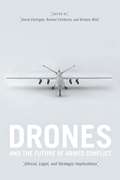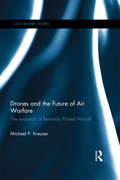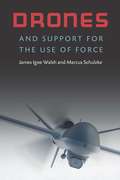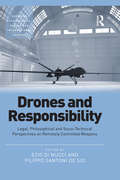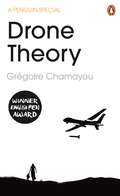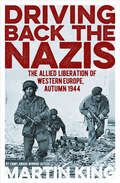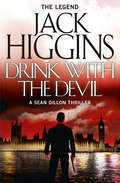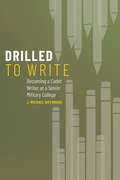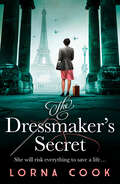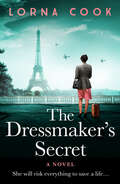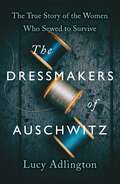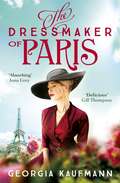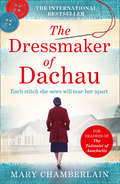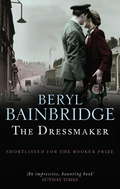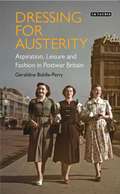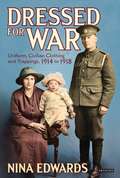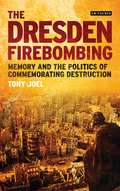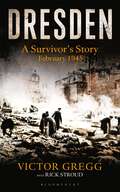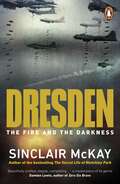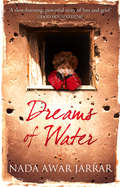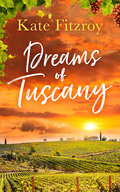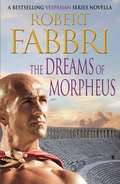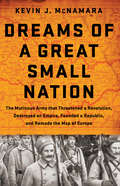- Table View
- List View
Drones and the Future of Armed Conflict: Ethical, Legal, and Strategic Implications
by David Cortright, Rachel Fairhurst, and Kristen Wall Rachel Fairhurst Kristen WallDuring the past decade, armed drones have entered the American military arsenal as a core tactic for countering terrorism. When coupled with access to reliable information, they make it possible to deploy lethal force accurately across borders while keeping one’s own soldiers out of harm’s way. The potential to direct force with great precision also offers the possibility of reducing harm to civilians. At the same time, because drones eliminate some of the traditional constraints on the use of force—like the need to gain political support for full mobilization—they lower the threshold for launching military strikes. The development of drone use capacity across dozens of countries increases the need for global standards on the use of these weapons to assure that their deployment is strategically wise and ethically and legally sound. Presenting a robust conversation among leading scholars in the areas of international legal standards, counterterrorism strategy, humanitarian law, and the ethics of force, Drones and the Future of Armed Conflict takes account of current American drone campaigns and the developing legal, ethical, and strategic implications of this new way of warfare. Among the contributions to this volume are a thorough examination of the American government’s legal justifications for the targeting of enemies using drones, an analysis of American drone campaigns’ notable successes and failures, and a discussion of the linked issues of human rights, freedom of information, and government accountability.
Drones and the Future of Air Warfare: The Evolution of Remotely Piloted Aircraft (Cass Military Studies)
by Michael P. KreuzerThis book examines the evolution of airpower and specifically the growth and proliferation of Remotely Piloted Aircraft (RPAs). While most existing literature examines either the law or ethics of RPAs, and some newer scholarship looks to the battlefield effectiveness (the gains from strikes versus the potential for ‘blowback, etc.), this work investigates it from a broader military perspective. It examines the strategy for employment of RPAs across the spectrum of warfare, the potential deterrent value of RPAs in some circumstances, and the resulting ability of RPAs to fundamentally shift the character of when and how wars are fought. The central aim of this book is to evaluate the role of ‘drones’ in warfare to date, and make basic projections on how states will adopt RPAs and UCAVs in the future. At the core is the goal of answering a broad, underlying research question: How will the RPA innovation impact military strategy and international security? This book will be of much interest to students of airpower, drone warfare, military and strategic studies, security studies and IR.
Drones and the Future of Air Warfare: The Evolution of Remotely Piloted Aircraft (Cass Military Studies)
by Michael P. KreuzerThis book examines the evolution of airpower and specifically the growth and proliferation of Remotely Piloted Aircraft (RPAs). While most existing literature examines either the law or ethics of RPAs, and some newer scholarship looks to the battlefield effectiveness (the gains from strikes versus the potential for ‘blowback, etc.), this work investigates it from a broader military perspective. It examines the strategy for employment of RPAs across the spectrum of warfare, the potential deterrent value of RPAs in some circumstances, and the resulting ability of RPAs to fundamentally shift the character of when and how wars are fought. The central aim of this book is to evaluate the role of ‘drones’ in warfare to date, and make basic projections on how states will adopt RPAs and UCAVs in the future. At the core is the goal of answering a broad, underlying research question: How will the RPA innovation impact military strategy and international security? This book will be of much interest to students of airpower, drone warfare, military and strategic studies, security studies and IR.
Drones and Support for the Use of Force
by James Igoe Walsh Marcus SchulzkeCombat drones are transforming attitudes about the use of military force. Military casualties and the costs of conflict sap public support for war and for political and military leaders. Combat drones offer an unprecedented ability to reduce these costs by increasing accuracy, reducing the risks to civilians, and protecting military personnel from harm. These advantages should make drone strikes more popular than operations involving ground troops. Yet many critics believe drone warfare will make political leaders too willing to authorize wars, weakening constraints on the use of force. Because combat drones are relatively new, these arguments have been based on anecdotes, a handful of public opinion polls, or theoretical speculation. Drones and Support for the Use of Force uses experimental research to analyze the effects of combat drones on Americans’ support for the use of force. The authors’ findings—that drones have had important but nuanced effects on support for the use of force—have implications for democratic control of military action and civil-military relations and provide insight into how the proliferation of military technologies influences foreign policy.
Drones and Responsibility: Legal, Philosophical and Socio-Technical Perspectives on Remotely Controlled Weapons (Emerging Technologies, Ethics and International Affairs)
by Ezio Di Nucci Filippo Santoni SioHow does the use of military drones affect the legal, political, and moral responsibility of different actors involved in their deployment and design? This volume offers a fresh contribution to the ethics of drone warfare by providing, for the first time, a systematic interdisciplinary discussion of different responsibility issues raised by military drones. The book discusses four main sets of questions: First, from a legal point of view, we analyse the ways in which the use of drones makes the attribution of criminal responsibility to individuals for war crimes more complicated and what adjustments may be required in international criminal law and in military practices to avoid ’responsibility gaps’ in warfare. From a moral and political perspective, the volume looks at the conditions under which the use of military drones by states is impermissible, permissible, or even obligatory and what the responsibilities of a state in the use of drones towards both its citizens and potential targets are. From a socio-technical perspective, what kind of new human machine interaction might (and should) drones bring and which new kinds of shared agency and responsibility? Finally, we ask how the use of drones changes our conception of agency and responsibility. The book will be of interest to scholars and students in (military) ethics and to those in law, politics and the military involved in the design, deployment and evaluation of military drones.
Drones and Responsibility: Legal, Philosophical and Socio-Technical Perspectives on Remotely Controlled Weapons (Emerging Technologies, Ethics and International Affairs)
by Ezio Di Nucci Filippo Santoni SioHow does the use of military drones affect the legal, political, and moral responsibility of different actors involved in their deployment and design? This volume offers a fresh contribution to the ethics of drone warfare by providing, for the first time, a systematic interdisciplinary discussion of different responsibility issues raised by military drones. The book discusses four main sets of questions: First, from a legal point of view, we analyse the ways in which the use of drones makes the attribution of criminal responsibility to individuals for war crimes more complicated and what adjustments may be required in international criminal law and in military practices to avoid ’responsibility gaps’ in warfare. From a moral and political perspective, the volume looks at the conditions under which the use of military drones by states is impermissible, permissible, or even obligatory and what the responsibilities of a state in the use of drones towards both its citizens and potential targets are. From a socio-technical perspective, what kind of new human machine interaction might (and should) drones bring and which new kinds of shared agency and responsibility? Finally, we ask how the use of drones changes our conception of agency and responsibility. The book will be of interest to scholars and students in (military) ethics and to those in law, politics and the military involved in the design, deployment and evaluation of military drones.
Drone Theory
by Grégoire ChamayouDrone Theory is Gregoire Chamayou's poignant and sharply argued polemic against US drone warfare.In 2011 alone, the US deployed one drone strike every four days in Pakistan. Drone Theory is a rigorous polemic against the increasing use of robot warfare around the world. Drawing on philosophical debate, moral lessons from Greek mythology and transcripts of conversations between drone operators, Drone Theory re-evaluates the socio-political impact of drone warfare on the world - and its people. Chamayou takes us through Nevada, Pakistan and arresting philosophical terrain to reveal how drones are changing the landscape of war theory and to highlight the profound moral implications of our own silence in the face of drone warfare.Born in 1976, Grégoire Chamayou is a philosopher at the Centre National de la Recherche Scientifique in Paris and the author of Les corps vils and Manhunts: A Philosophical History. Chamayou also lectures at Université de Paris Ouest, and has written for Le Monde Diplomatique among other publications. Janet Lloyd has translated over seventy books from French to English and has twice been awarded the Scott Moncrieff prize.
Driving Back the Nazis: The Allied Liberation of Western Europe, Autumn 1944
by Martin KingA gripping account of the Allied liberation of Western Europe, masterfully told by Emmy-award winning writer and historian Martin King. Through the autumn of 1944, Allied troops made their way across Nazi-occupied Europe, liberating towns and villages as they went. Driving Back the Nazis explores this process of liberation, from the arrival of Allied forces in Paris through the emancipation of Belgium to the closing down of Nazi prison camps. But there was a darker side to liberation too - collaborators were harshly punished, and in some cases the liberating forces brought their own troubles with them. Martin King tells the story of liberation from all sides - we hear the voices of Allied high command, ordinary American and British soldiers, local civilians, and even the defeated German forces.
Drink with the Devil (Sean Dillon Series #5)
by Jack HigginsTen years ago, a fortune in gold bullion was stolen, only to disappear beneath the Irish Sea. Now it’s been found, and Sean Dillon must face ghosts from his past in the race to get to it first.
Drilled to Write: Becoming a Cadet Writer at a Senior Military College
by J. Michael RifenburgDrilled to Write offers a rich account of US Army cadets navigating the unique demands of Army writing at a senior military college. In this longitudinal case study, J. Michael Rifenburg follows one cadet, Logan Blackwell, for four years and traces how he conceptualizes Army writing and Army genres through immersion in military science classes, tactical exercises in the Appalachian Mountains, and specialized programs like Airborne School. Drawing from research on rhetorical genre studies, writing transfer, and materiality, Drilled to Write speaks to scholars in writing studies committed to capturing how students understand their own writing development. Collectively, these chapters articulate four ways Blackwell leveraged resources through ROTC to become a cadet writer at this military college. Each chapter is dedicated to one year of his undergraduate experience with focus on curricular writing for his business management major and military science classes as well as his extracurricular writing, like his Ballroom Dance Club bylaws and a three-thousand-word short story. In Drilled to Write, Rifenburg invites readers to see how cadets are positioned between civilian and military life—a curiously liminal space where they develop as writers. Using Army ROTC as an entry into genre theory and larger conversations about the role higher education plays in developing Army officers, he shows how writing students develop genre awareness and flexibility while forging a personal identity.
The Dressmaker’s Secret
by Lorna Cook‘Extraordinary… Brought history alive on the page… Tense and emotional… Sensitive yet brutal…With the most unexpected end that left me breathless. Wow, just wow… Incredible’ NetGalley Review, ⭐⭐⭐⭐⭐ 1941, Nazi-occupied Paris: In the glamourous Ritz hotel there is a woman with a dangerous secret…
The Dressmaker’s Secret
by Lorna Cook‘Extraordinary… Brought history alive on the page… Tense and emotional… Sensitive yet brutal…With the most unexpected end that left me breathless. Wow, just wow… Incredible’ NetGalley Review, ⭐⭐⭐⭐⭐ 1941, Nazi-occupied Paris: In the glamourous Ritz hotel there is a woman with a dangerous secret…
The Dressmakers of Auschwitz: The True Story of the Women Who Sewed to Survive
by Lucy Adlington'Lucy Adlington tells of the horrors of the Nazi occupation and the concentration camps from a fascinating and original angle. She introduces us to a little known aspect of the period, highlighting the role of clothes in the grimmest of societies imaginable and giving an insight into the women who stayed alive by stitching' - Alexandra Shulman, author of Clothes...and other things that matter'An utterly absorbing, important and unique historical read' - Judy Batalion, NY Times bestselling author of The Light of Our Days: The Untold Story of Women Resistance Fighters in Hitler's GhettosThe powerful chronicle of the women who used their sewing skills to survive the Holocaust, stitching beautiful clothes at an extraordinary fashion workshop created within one of the most notorious WWII death camps. At the height of the Holocaust twenty-five young inmates of the infamous Auschwitz-Birkenau concentration camp - mainly Jewish women and girls - were selected to design, cut, and sew beautiful fashions for elite Nazi women in a dedicated salon. It was work that they hoped would spare them from the gas chambers. This fashion workshop - called the Upper Tailoring Studio - was established by Hedwig Höss, the camp commandant's wife, and patronized by the wives of SS guards and officers. Here, the dressmakers produced high-quality garments for SS social functions in Auschwitz, and for ladies from Nazi Berlin's upper crust. Drawing on diverse sources - including interviews with the last surviving seamstress - The Dressmakers of Auschwitz follows the fates of these brave women. Their bonds of family and friendship not only helped them endure persecution, but also to play their part in camp resistance. Weaving the dressmakers' remarkable experiences within the context of Nazi policies for plunder and exploitation, historian Lucy Adlington exposes the greed, cruelty, and hypocrisy of the Third Reich and offers a fresh look at a little-known chapter of World War II and the Holocaust.
The Dressmaker of Paris: 'A story of loss and escape, redemption and forgiveness. Fans of Lucinda Riley will adore it' (Sunday Express)
by Georgia Kaufmann'Involving, immersive and unputdownable' - bestselling author Jill MansellI need to tell you a story, ma chère. My story.Rosa Kusstatscher has built a global fashion empire upon her ability to find the perfect outfit for any occasion. But tonight, as she prepares for the most important meeting of her life, her usual certainty eludes her.What brought her to this moment? As she struggles to select her dress and choose the right shade of lipstick, Rosa begins to tell her incredible story. The story of a poor country girl from a village high in the mountains of Italy. Of Nazi occupation and fleeing in the night. Of hope and heartbreak in Switzerland; glamour and love in Paris. Of ambition and devastation in Rio de Janeiro; success and self-discovery in New York.A life spent running, she sees now. But she will run no longer.Breathtaking and utterly enthralling, The Dressmaker of Paris is perfect for fans of Lucinda Riley, Kate Morton and Dinah Jefferies.'The Dressmaker of Paris is a delicious book: elegantly structured, beautifully written and with a fascinating protagonist. Georgia Kaufmann has created a beautiful and compelling novel that had me hooked until the very last page. And that ending: wow!' - Gill Thompson, bestselling author of The Oceans Between Us'Sensuous, sweeping and utterly engrossing, The Dressmaker of Paris is as dazzling and finely crafted as a Dior gown' - Rachel Rhys, bestselling author of Dangerous Crossing'The story of a remarkable woman . . . A book you will lose yourself in' - Gill Paul, bestselling author of THE LOST DAUGHTER
The Dressmaker: Shortlisted for the Booker Prize, 1973 (Sound Ser.)
by Beryl Bainbridge'The book I wish I'd written . . . Witty, chilling, every word in place' Hilary Mantel, GuardianWartime Liverpool is a place of ration books and jobs in munitions factories. Rita, living with her two aunts Nellie and Margo, is emotionally naïve and withdrawn. When she meets Ira, a GI, at a neighbour's party she falls in love as much with the idea of life as a GI bride as with the man himself. But Nellie and Margo are not so blind...
Dressing for Austerity: Aspiration, Leisure and Fashion in Post-war Britain (Dress Cultures)
by Geraldine Biddle-PerryA new look for Austerity...The coldest winter on record, rationing, successive economic crises, bombed out towns and cities; with some justification 'Austerity Britain' in the late 1940s is coloured in the popular imagination in tones of drab. Dressing for Austerity shines a light on alternative visions of post-war optimism and aspiration. It traces how, set against the Labour government's philosophy of 'Austerity by design' in a climate of post-war idealism, the desire for affordable fashionable clothing, access to leisure, and the health, time and money to enjoy them became totemic symbols of post-war ambition that impelled new strategies of state control and consumer agency. The book examines the immediate post-war period – its politics, its fashions and its people - in new ways and on its own terms as a critical tipping point in the making of modern Britain.
Dressed for War: Uniform, Civilian Clothing and Trappings, 1914 to 1918
by Nina EdwardsMen in khaki and grey squatting in the trenches, women at work, gender bending in goggles, with overalls on over their trousers. What people wear matters. Well illustrated, this book tells the stories of what people on both sides wore on the front line and on the home front through the seismic years of World War I. Nina Edwards reveals fresh aspects of the war through the prism of the smallest details of personal dress, of clothes, hair and accessories, both in uniform and civilian wear. She explores how, during a period of extraordinary upheaval and rapid change, wearing a certain perfume, say, or the just-so adjustment to the tilt of a hat offer insights into the individual experience of men, women and children during the course of World War I.
The Dresden Firebombing: Memory and the Politics of Commemorating Destruction (International Library Of Twentieth Century History Ser.)
by Tony JoelThe firebombing of Dresden marks the terrible apex of the European bombing war. In just over two days in February 1945, over 1,300 heavy bombers from the RAF and the USAAF dropped nearly 4,000 tonnes of explosives on Dresden's civilian centre. Since the end of World War II, both the death toll and the motivation for the attack have become fierce historical battlegrounds, as German feelings of victimhood compete with those of guilt and of loss. The Dresden bombing was used by East Germany as a propaganda tool, and has been re-appropriated by the neo-Nazi far right. Meanwhile the rebuilding of the Frauenkirche - the city's sumptuous 18th century church destroyed in the raid - became central to German identity, while in London, a statue of the Commander-in-Chief of RAF Bomber Command, Sir Arthur Harris, has attracted protests. In this book, Tony Joel focuses on the historical battle to re-appropriate Dresden, and on how World War II continues to shape British and German identity some seventy years later.
Dresden: A Survivor's Story
by Victor GreggIn Slaughterhouse-Five Kurt Vonnegut fictionalised his time as a prisoner of war in 1945. Vonnegut was imprisoned in a deep cellar in Dresden while a firestorm raged through the city, wiping out generations of innocent lives. Victor Gregg remained above ground. This is his true story.In four air raids over two days in February 1945, the British Royal Air Force and the United States Army Air Forces dropped more than 3,900 tons of high-explosive bombs and incendiary devices on Dresden. The resulting firestorm destroyed six square miles of the city centre. 25,000 people, mostly civilians, were estimated to have been killed. Post-war discussion of whether or not the attacks were justified has led to the bombing becoming one of the moral questions of the Second World War. Already a seasoned soldier with the Rifle Brigade, Gregg joined the 10th Parachute Regiment in 1944. He was captured at Arnhem where he volunteered to be sent to a work camp rather than become another faceless number in the huge POW camps. With two failed escape attempts under his belt, Gregg was eventually caught sabotaging a factory and sent for execution.Gregg's first-hand narrative, personal and punchy, sees him through the trauma and carnage of the Dresden bombing. After the raid he spent five days helping to recover a city of innocent civilians, thousands of whom had died in the fire storm, trapped underground in human ovens. As order was restored his life was once more in danger and he escaped to the east, spending the last weeks of the war with the Russians.
Dresden: The Fire and the Darkness
by Sinclair McKayIn February 1945 the Allies obliterated Dresden, the 'Florence of the Elbe'. Explosive bombs weighing over 1,000 lbs fell every seven and a half seconds and an estimated 25,000 people were killed. Was Dresden a legitimate military target or was the bombing a last act of atavistic mass murder in a war already won?From the history of the city to the attack itself, conveyed in a minute-by-minute account from the first of the flares to the flames reaching almost a mile high - the wind so searingly hot that the lungs of those in its path were instantly scorched - through the eerie period of reconstruction, bestselling author Sinclair McKay creates a vast canvas and brings it alive with touching human detail.Along the way we encounter, for example, a Jewish woman who thought the English bombs had been sent from heaven, novelist Kurt Vonnegut who wrote that the smouldering landscape was like walking on the surface of the moon, and 15-year-old Winfried Bielss, who, having spent the evening ushering refugees, wanted to get home to his stamp collection. He was not to know that there was not enough time.Impeccably researched and deeply moving, McKay uses never-before-seen sources to relate the untold stories of civilians and vividly conveys the texture of life in a decimated city. Dresden is invoked as a byword for the illimitable cruelties of war, but with the ever-lengthening distance of time, it is now possible to approach this subject with a much clearer gaze, less occluded with the weight of prejudice in either direction, and with a keener interest in the sorts of lives that ordinary people lived and lost, or tried to rebuild.From general and individual morality in war to the raw, primal instinct for survival, through the seemingly unstoppable gravity of mass destruction and the manipulation of memory, this is a master historian at work.'Extraordinary . . . a remarkably faithful account' Guardian on The Secret Life of Bletchley Park'Painstakingly researched and fascinating' John Harding, Daily Mail on The Secret Listeners'Lucid, well-researched and rich in detail' John Preston, Daily Mail on The Spies of Winter'Fascinating, riveting, unsettling, and wonderfully rich in period detail' Craig Brown, Mail on Sunday on Mile End Murder
Dreams of Water
by Nada Awar JarrarSet during the 1980s civil war in Lebanon, ‘Dreams of Water’ is complusively readable, deceptively simple and overwhelmingly moving.
Dreams Of Tuscany
by Kate FitzroyThe Tuscan sun burns down from an azure sky on the day that Zoe Bennett, a young English estate agent, shows Alex Knight around a beautiful but derelict villa. Alex, an architect from Bath is keen and ready to take on the restoration.
The Dreams of Morpheus: A Crossroads Brotherhood Novella from the bestselling author of the VESPASIAN series (A Crossroads Brotherhood Novella #2)
by Robert FabbriRome, AD 34: Marcus Salvius Magnus, leader of the Crossroads Brotherhood, is searching for the resin of an eastern flower that can unlock the realm of Morpheus. His patron, Senator Pollo, needs it for the city's most powerful woman, the Lady Antonia, in order to recoup a considerable debt. Meanwhile, rebellion is in the air and as the Ides of October festival dawns to celebrate the completion of agricultural and military campaigns, a violent riot erupts. Can Magnus help right the wrongs that have been perpetrated upon the stirred-up crowd?A VESPASIAN NOVELLA______________________________________________Don't miss Robert Fabbri's epic new series Alexander's Legacy
Dreams of a Great Small Nation: The Mutinous Army that Threatened a Revolution, Destroyed an Empire, Founded a Republic, and Remade the Map of Europe
by Kevin J McNamara"The pages of history recall scarcely any parallel episode at once so romantic in character and so extensive in scale.” -Winston S. ChurchillIn 1917, two empires that had dominated much of Europe and Asia teetered on the edge of the abyss, exhausted by the ruinous cost in blood and treasure of the First World War. As Imperial Russia and Habsburg-ruled Austria-Hungary began to succumb, a small group of Czech and Slovak combat veterans stranded in Siberia saw an opportunity to realize their long-held dream of independence.While their plan was audacious and complex, and involved moving their 50,000-strong army by land and sea across three-quarters of the earth's expanse, their commitment to fight for the Allies on the Western Front riveted the attention of Allied London, Paris, and Washington.On their journey across Siberia, a brawl erupted at a remote Trans-Siberian rail station that sparked a wholesale rebellion. The marauding Czecho-Slovak Legion seized control of the Trans-Siberian Railroad, and with it Siberia. In the end, this small band of POWs and deserters, whose strength was seen by Leon Trotsky as the chief threat to Soviet rule, helped destroy the Austro-Hungarian Empire and found Czecho-Slovakia.British prime minister David Lloyd George called their adventure "one of the greatest epics of history,” and former US president Teddy Roosevelt declared that their accomplishments were "unparalleled, so far as I know, in ancient or modern warfare.”
